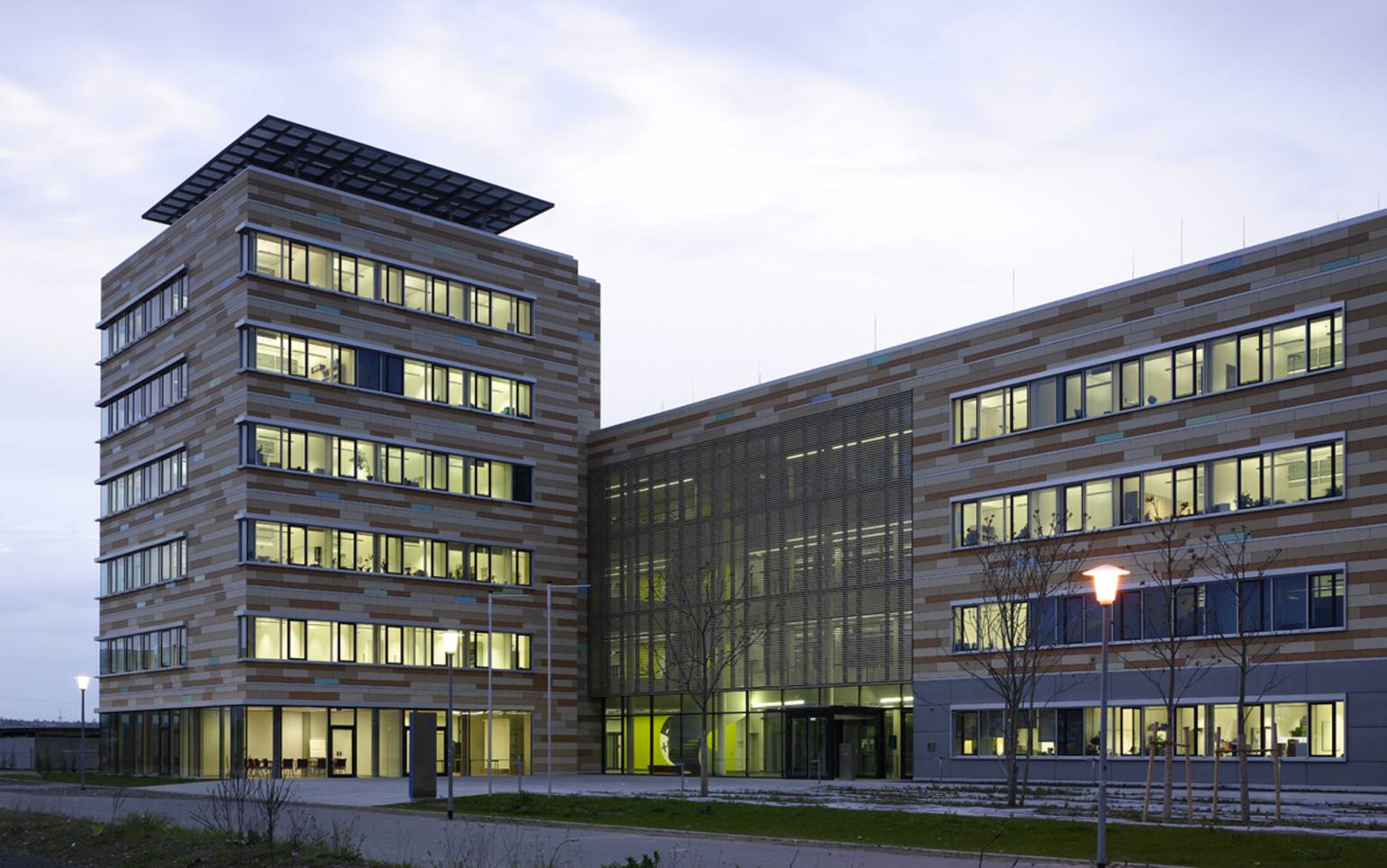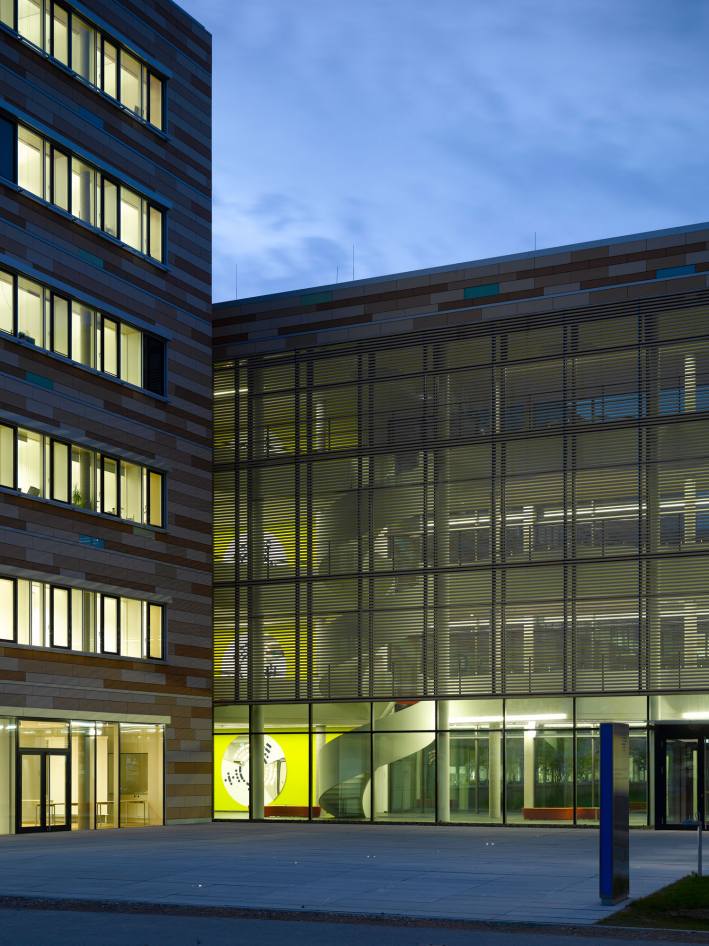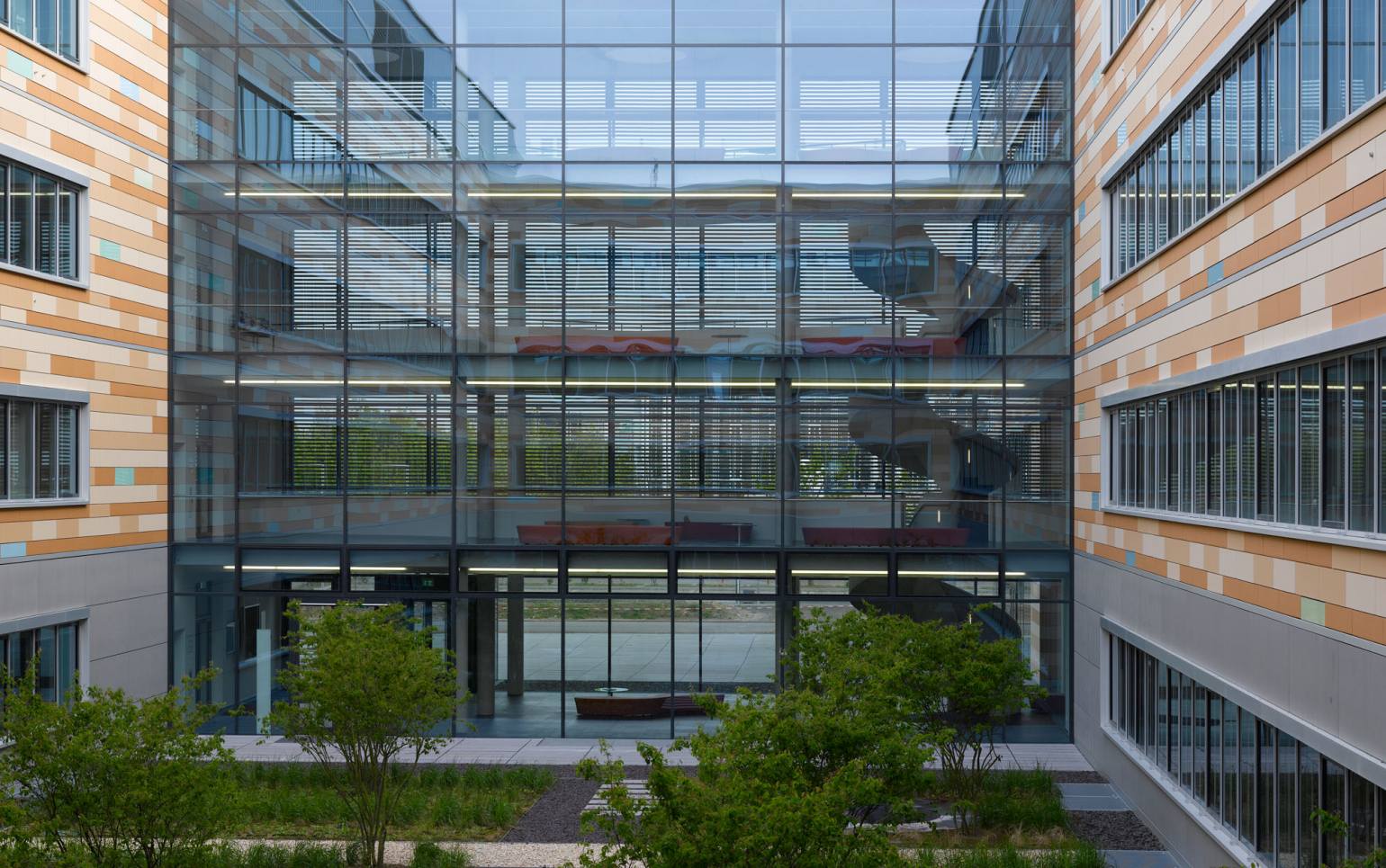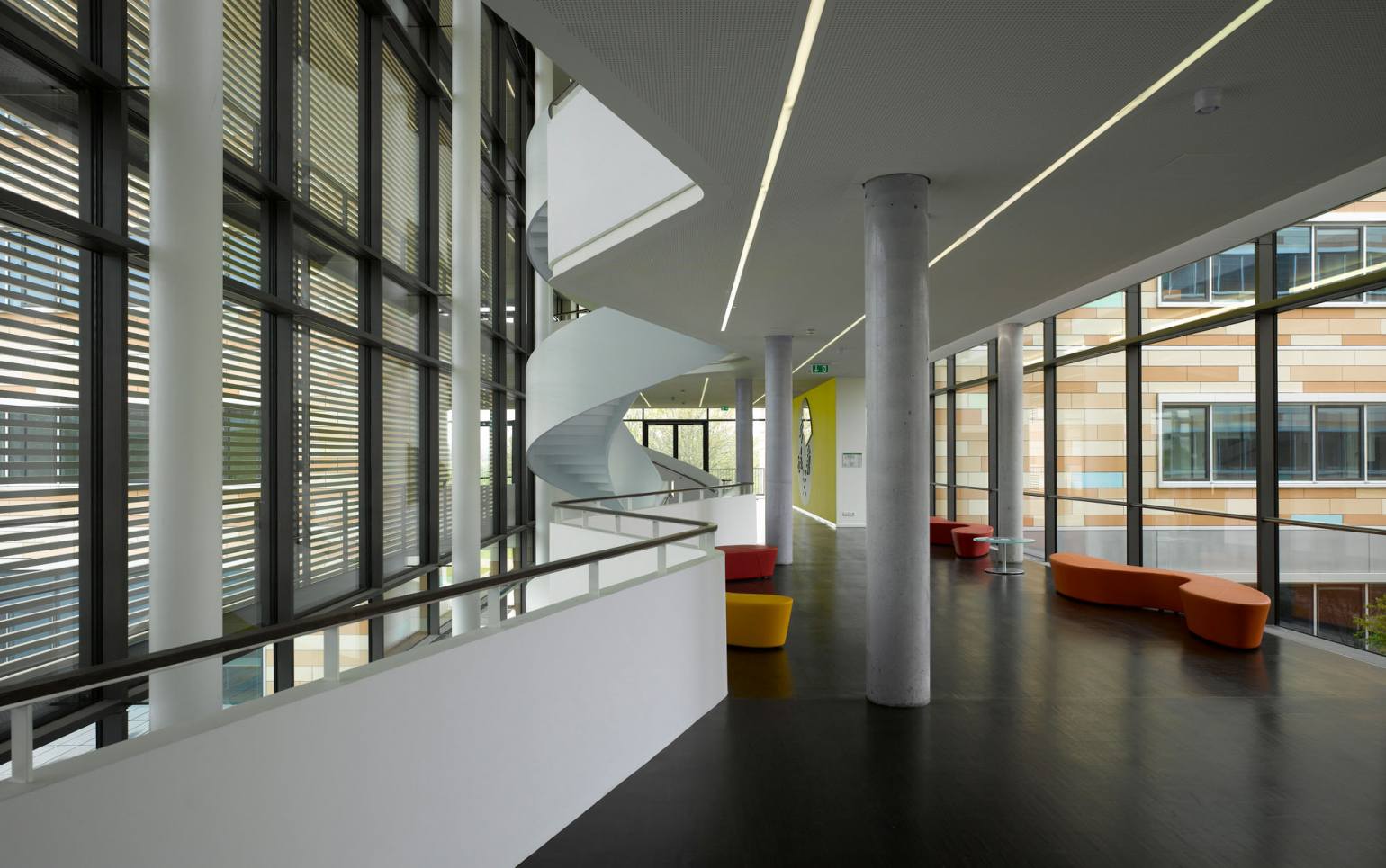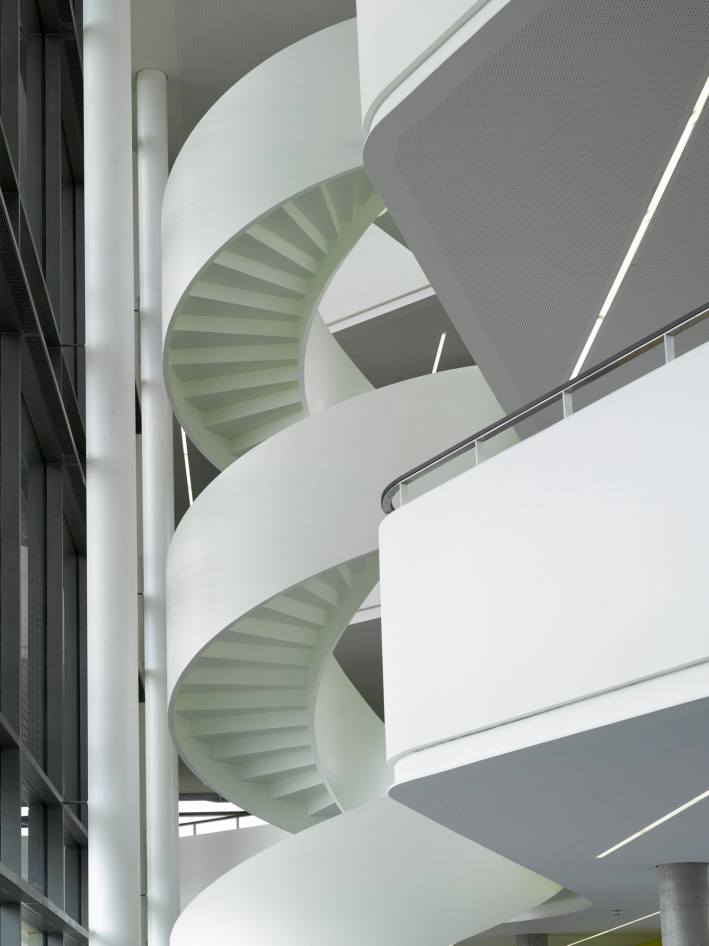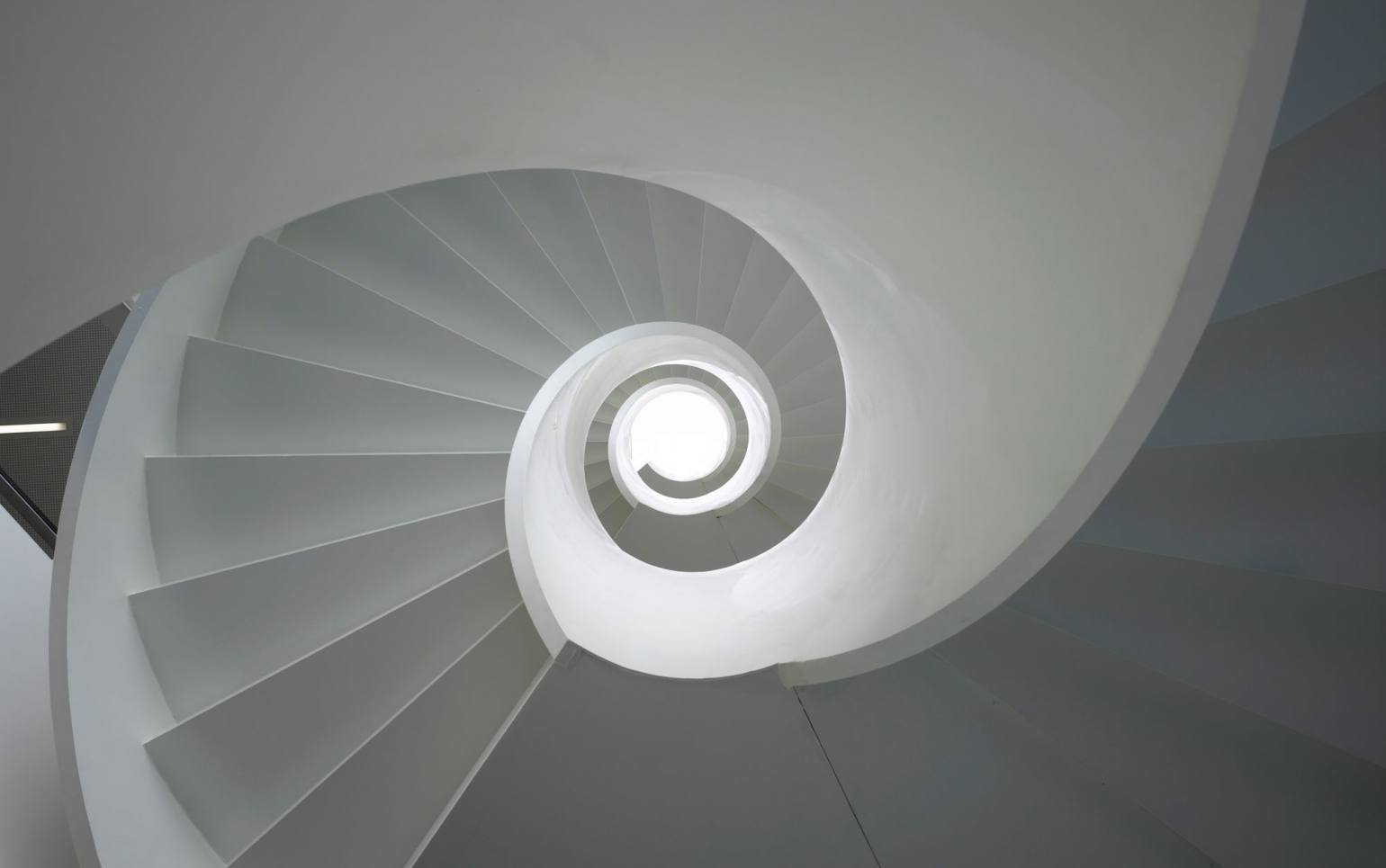Max Planck Institute for Chemistry, Mainz
Client
Max Planck Society for the Advancement of Science
Competition 1st prize
2007
Start of Planning - Completion
2007 - 2012
Performance phases
2 - 8
Team
Planning: Andreas Wurmer, Kurt Bauer, Anja Riegraf, Silke Koller, Cedric Ehlers, Site management: Architects Partner Schmitt Dannien Hofmann, Tübingen
Building data
Total cost 44,000,000 €
Gross floor area 20,382 m²
The Max Planck Institute for Chemistry in Mainz conducts basic research with focus on atmospheric chemistry, biogeochemistry, geochemistry, particle chemistry and satellite remote sensing.
The institute is located on the western edge of the university grounds, at the end point of the planned university campus path. The six-storey, tower-like structure of the new premises of the institute is a distinct landmark on the campus path leading through an architecturally heterogeneous environment of university buildings. It is positioned to the front of a further rectangular, four-storey structure containing labs and offices, creating space for a small entrance forecourt.
The new construction is divided into three structures: tower, research wing and workshop. A multi-storey entrance hall area is the communicative centre of the institute, with access to the seminar area, library and administration in the "tower". A spiral staircase links the "communication decks" to each other, while zigzagging balustrades enclosing the floors allow views of the other storeys, the forecourt and inner courtyard. U-shaped corridors lead from the entrance hall to the research wing, providing access to labs facing the inner courtyard and offices with a view of the campus. The research departments are accommodated one upon the other in four storeys according to research area – ranging from the liquid core of the earth, the rock layers of the earth surface, the surrounding layers of air, all the way to the galactic cosmos.
The façade of the building hints at the layered organisation of the research areas inside, and similar to rock strata, the ceramic façades are interrupted by "inclusions", symbolized by panels of coloured glass.

